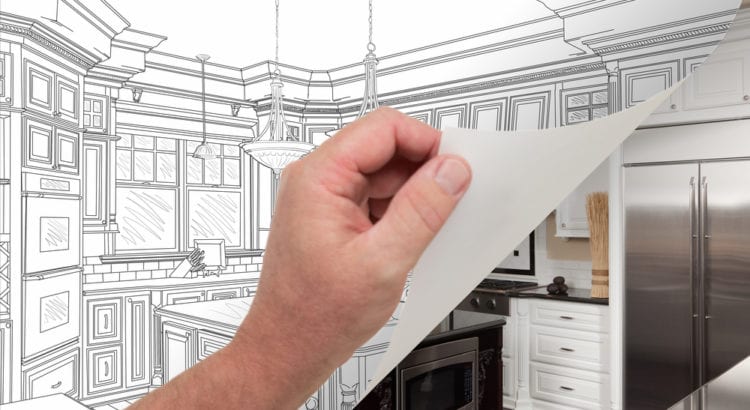Real estate and, more specifically, house flipping, can be an incredibly profitable business. With the right home and in the right market, it’s possible to make tens of thousands of dollars on a single house over the matter of a few months. And that’s just one house.
Once you get the hang of flipping properties and discovering how to identify homes with the greatest return on investment potential, you’ll turn your flipping business into a well-oiled machine.
However, before any of that happens, you’ll need to start out with a single property. There will likely be growing pains as you learn along the way as well. However, by keeping these tips in mind, you’ll cut down on major expenses, all while boosting the potential profit while flipping homes.
Always Inspect The Property
Never look at the asking price, do a walkthrough of your own, and decide to buy it right then and there. This is a classic mistake and one that can cost you. Unless you’re a contractor you may miss substantial problems with the house.
You might not have seen the sloping foundation or the major problems with the roof. If you need to fix the foundation and install a new roof you’ll easily spend $50,000 or more on just these two repairs. This might completely eat away your entire profit margin.
So before you buy any property, always have it inspected. It doesn’t matter if you intend to gut it and flip it.
Look For Good Bones
It’s easy to fall in love with small features of a house. Maybe one property has a beautiful stained glass window or the most attractive backyard you’ve ever seen. When you see such a property it’s easy to get distracted.
In fact, while these are nice features, never buy a property to flip just because of a feature. You want a property with good bones. When it has good bones (in other words, a strong, level foundation, and solid construction), you can make up for any cosmetic problems. In fact, you can add as many features as you might like to make the property more attractive.
It is repairing problems with the bones where the real expenses creep up. Installing new windows might cost a few thousand dollars. But lifting the entire house, this will cost more than most complete renovations.
Only buy a house to flip if it has good bones – this is one of the best money-savings tips we can give you. Anything else will both cost too much to fix and take too long to flip.
Are Homes Selling In The Neighborhood?
One of the mistakes potential flippers make is not looking at the buying market of a given neighborhood. They might look at what housing prices are in the community and even the demographics of median income and family makeup. All of this is valuable data. However, it’s not the most important piece of information.
You need to know how long the average house stays on the market. Some communities are hot, to a point where a property sells within the same week or two, it goes on the market. Yet other communities do not receive the same kind of interest from potential buyers.
Even if you can buy a house and sell it for a greater amount of money in a slower moving community, it’s better to buy a house you can fix and flip right away.
Why?
Because for every month you hold onto the house that’s another month you have to pay a mortgage.
Time really is money in the world of house flipping. So if you buy a property with a $1,000 mortgage and you end up sitting on it for six months, that’s $6,000 out of your potential profit.
You want to get in and get out as quickly as possible, especially when starting off.
After you’re established and have a half-dozen properties going at once you may be able to afford to hold onto some properties for longer, if you know you’ll make a larger profit when it does sell. But in the beginning, shoot for a fast-selling community.
Home Depot (and Lowes) Is Your Friend
Yes, you can buy all kinds of goods for the flip from your local home improvement store, but that’s not why it’s really your friend.
The more work you do on the property yourself the greater your potential profit. This also means every dollar you give to a contractor is one less dollar you’ll have when you sell the house.
Many of the jobs a contractor will do for you are jobs you could actually perform yourself. You just don’t have the right experience or knowledge at your disposal.
This is where the local home improvement store comes in.
Most stores such as Home Depot and Lowes offer free tutorial demonstrations on weekends (check out the websites for stores nearby to see when these classes are offered). By attending these classes you’ll learn how to do these tasks within the home you’re flipping.
You’ll discover many of these tasks are not terribly difficult. It might take a few hours longer to do, but you’ll save hundreds of dollars on every job you do yourself. Plus, the more frequently you flip homes, the more practice you’ll have and the easiest it becomes.
But Know When You Need a Professional
There are some jobs you can do yourself.
Installing a toilet, laying tile, or even buffering a hardwood floor.
However, you need to know when to do the job yourself, and when to turn to a professional. If your home needs electrical work do not try to go about doing this yourself.
First, dealing with major utilities, such as electricity and gas, is dangerous. You not only put yourself in danger but potential buyers in danger.
Second, if a potential buyer is interested in your home they will hire a contractor to come in and inspect the house. If the electrical work is not done correctly you’ll need to hire someone to come in and repair what you already did. This forces you to pay for the electrical work twice before the house sells, and you’ll end up holding onto the property longer, which may mean you pay another mortgage payment.
So while much of the work you can do on your own, know when to hire a professional.
Connect With Contractors
At some point in time, you will need to work with contractors. You might be able to perform much of the work on your own with the first flip. In fact, if you’re doing one property at a time and are careful with the houses you buy you’ll find much of the work is easy to do. However, there will come a time where you either purchase a lemon of a house and it requires more repairs than you thought, or you’ll run out of easily-flipped properties and have to dig into homes with greater cosmetic fixes.
Whatever the reasoning, seek out a contractor you can directly work with. Show the contractor your portfolio of homes and your desire to continue the flipping process. If the contractor believes you’ll deliver a steady stream of work they may be more inclined to cut their asking price. So look around and discuss the partnership opportunity with these contractors. It may be a mutually beneficial relationship for both of you.
In Conclusion
Now is the perfect time to start flipping houses. Flipping real estate, when done right, has the potential to turn into a full-time, high-paying job. And this is a job where you’ll be your own boss. However, flipping homes are more difficult than what 30-minute television shows make it out to be. You need to know how to best pick out homes and how to keep costs down in order to increase your profits.
By following through with these tips and suggestions, you’ll avoid buying homes that not only will cost too much to repair but will stay on the market longer than you’d like. Plus, with the help of My Real Estate Business, you’ll have access to a team of professionals that will help give you all the necessary tools and education you need to be a successful house flipper.







